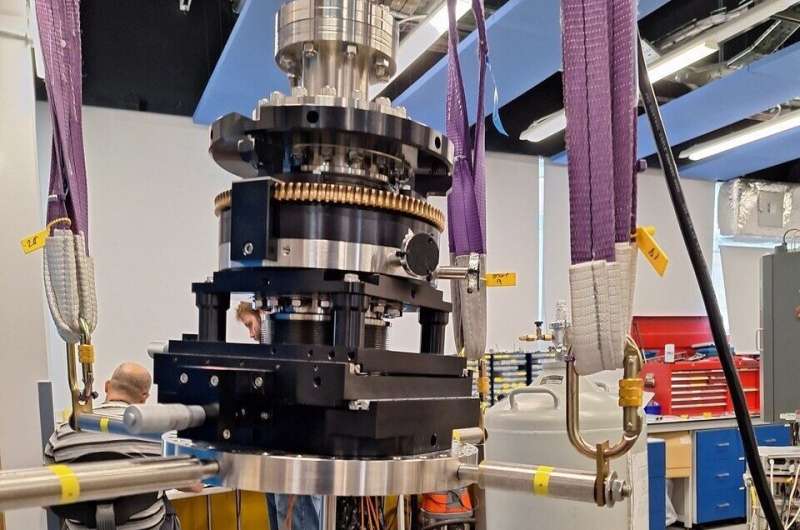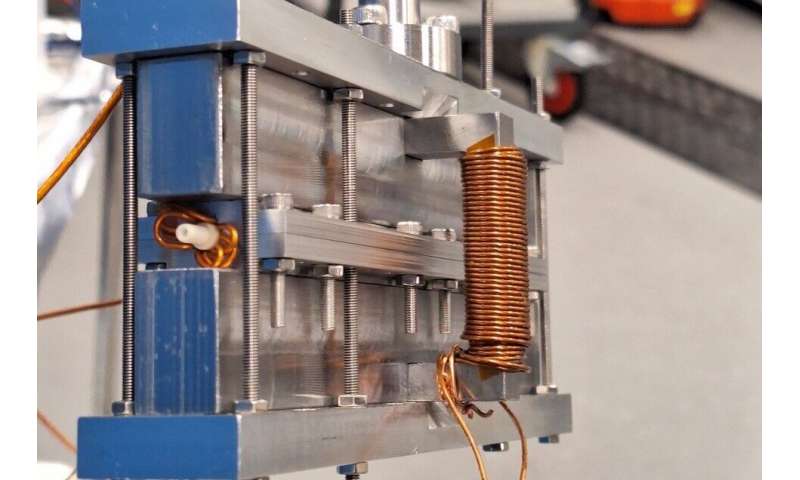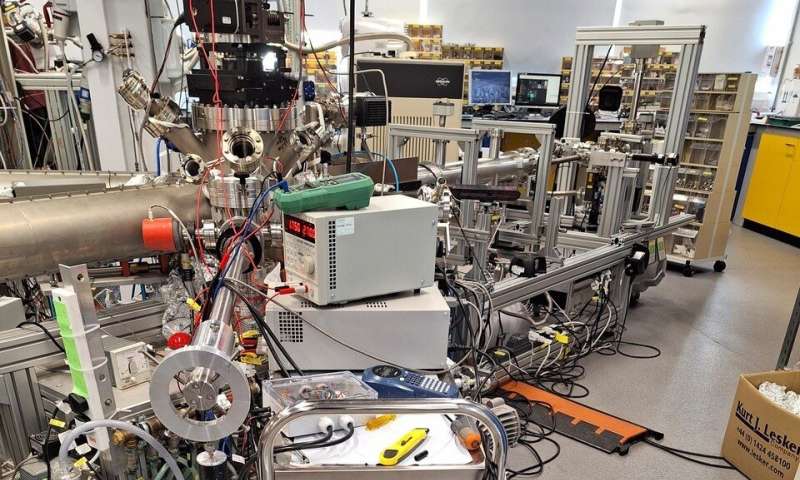This article has been reviewed according to Science X's editorial process and policies. Editors have highlighted the following attributes while ensuring the content's credibility:
fact-checked
peer-reviewed publication
trusted source
proofread
Faster than one pixel at a time—new imaging method for neutral atomic beam microscopes

Microscope images could be obtained much more quickly—rather than one pixel at a time—thanks to a new imaging method for neutral atomic beam microscopes developed by Swansea University researchers. It could ultimately lead to engineers and scientists getting faster results when they are scanning samples.
The research has been published in the latest issue of the journal Nature Communications.
Neutral atomic beam microscopes are a major focus of research interest at present. They are capable of imaging various surfaces which cannot be studied using commercially available microscopes. These could include delicate samples—such as bacterial biofilms, ice films or organic photovoltaic devices—which are difficult to image or which are damaged and altered by electrons, ions and photons.
They work by scattering a beam of low energy neutral particles, usually helium atoms, from a surface to image its structure and composition.
Existing neutral atomic beam microscopes obtain the image by illuminating the sample through a microscopic pinhole. They then scan the position of the sample while recording the scattered beam to build an image.
However, one major limitation of this approach is the imaging time required, as the image is measured one pixel at a time. Improving the resolution by reducing the pin-hole dimension reduces the beam flux dramatically and requires significantly longer measurement time.

This is where the new Swansea University research makes a difference. The research group of Professor Gil Alexandrowicz from the chemistry department have developed a new—and faster—alternative method to pinhole scanning.
They demonstrated the new method using a beam of helium-3 atoms, a rare light isotope of regular helium.
The method works by passing a beam of atoms through a non-uniform magnetic field and using nuclear spin precession to encode the position of the beam particles which interact with the sample.
Morgan Lowe, a Ph.D. student in the Swansea team, built the magnetic encoding device and performed the first set of experiments which demonstrate that the new method works.
The beam profile Mr. Lowe measured compares very well with numerical simulation calculations. The team has also used numerical simulations to show that the new magnetic encoding method should be capable of improving image resolution with a significantly smaller increase in time, in comparison to the currently used pin-hole microscopy approach.
-

A close-up of the magnetic encoding device before it was attached. The atomic beam enters the device through the hollow white ceramic tube shown. Credit: Morgan Lowe -

The experimental setup used to perform the proof of principle imaging experiments. Credit: Morgan Lowe
Professor Alexandrowicz of Swansea University chemistry department, lead researcher, explained, "The method we have developed opens up various new opportunities in the field of neutral beam microscopy. It should make it possible to improve image resolution without requiring forbiddingly long measurement times, and also has the potential for enabling new contrast mechanisms based on the magnetic properties of the sample studied.
"In the immediate future the new method will be further developed to create a fully working prototype magnetic encoding neutral beam microscope. This will allow testing of the resolution limits, contrast mechanisms and operation modes of the new technique.
"In the more distant future, this new type of microscope should become available to scientists and engineers to characterize the topography and composition of sensitive and delicate samples they produce and/or study."
More information: Morgan Lowe et al, Neutral beam microscopy with a reciprocal space approach using magnetic beam spin encoding, Nature Communications (2024). DOI: 10.1038/s41467-024-51175-2
Journal information: Nature Communications
Provided by Swansea University





















